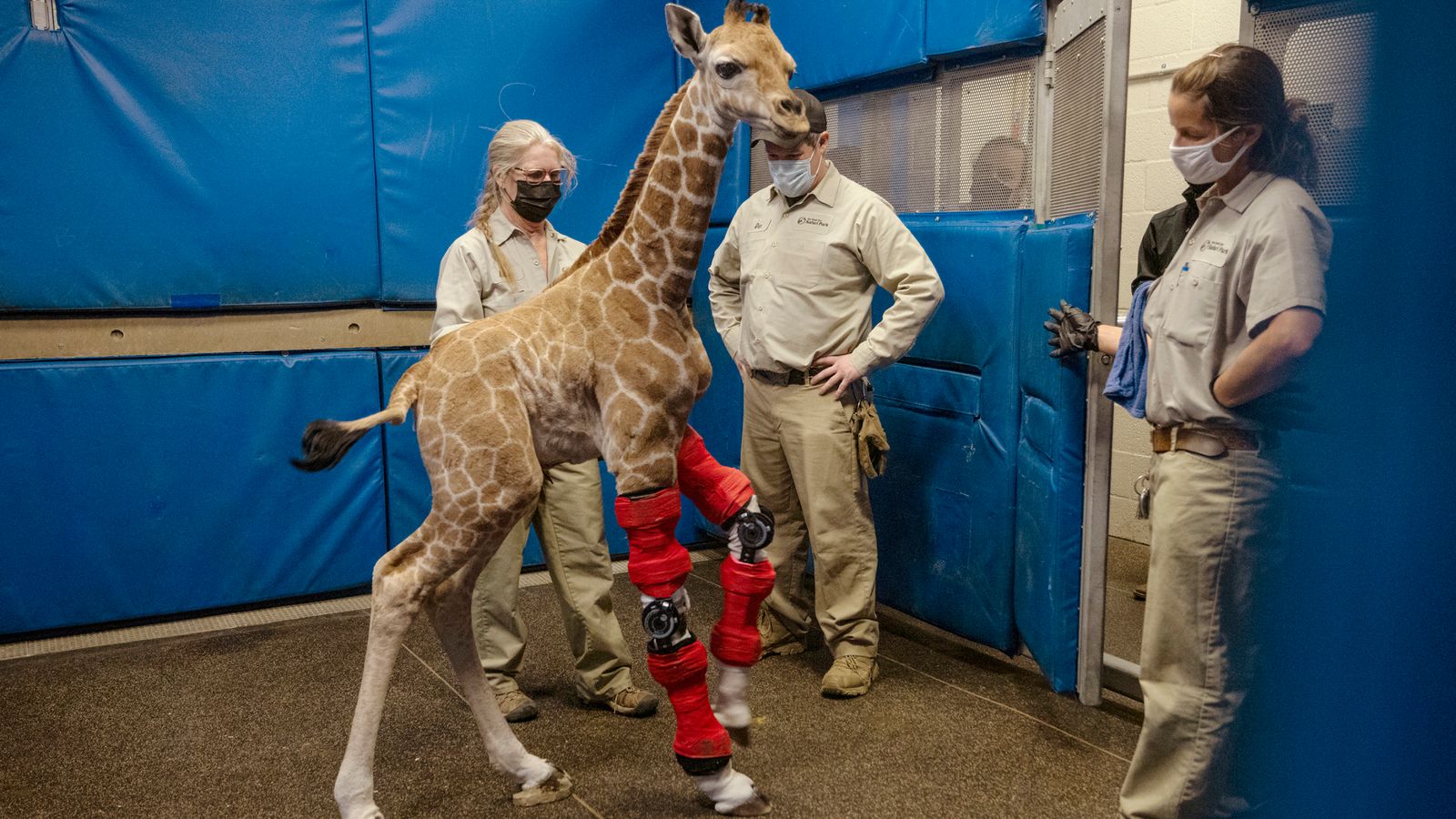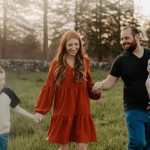A three-month-old giraffe calf was fitted with leg braces in California after being born with an unusual disorder that caused her legs to bend the wrong way.
Staff at San Diego Zoo Safari Park feared that 5ft 10in newborn Msituni could die if they didn’t immediately correct the condition which could prevent her from nursing and walking.
The baby giraffe suffered from hyperextended carpi – wrist joint bones in the front limbs of a giraffe, which act more like arms.
The zoo reached out to orthotic experts at the Hanger Clinic, where Ara Mirzaian, who has spent the past three decades fitting braces for Paralympians to children with scoliosis, landed his first animal patient.
Using cast moldings of the giraffe’s legs, it took eight days to make the carbon graphite braces that featured the animal’s distinct pattern of crooked spots to match her fur.
Mr Mirzaian said it was “pretty surreal” when he first heard about Msituni.
“It was the coolest thing to see an animal like that walk in a brace,” he said. “It feels good to know we saved a giraffe’s life.”
California: Girl seriously injured after coyote attack on beach
YouTuber’s pilot licence revoked after he ‘crashed plane to get views’
Sherri Papini: US woman admits faking her own kidnapping in 2016 and lying to the FBI
When they put her under to fit the custom brace, Mr Mirzaian was so moved by the animal’s beauty, he gave the giraffe a hug.
“It was just amazing seeing such a big, beautiful creature just laying there in front of me,” he said.
After 10 days in the custom brace, the problem was corrected.
In the end, Msituni only needed one brace. The other leg corrected itself with the medical grade brace.
While custom braces were being built Matt Kinney, a senior veterinarian for the San Diego Zoo Wildlife Alliance, bought post-surgery knee braces at Target that he cut up and re-sewed, but they kept slipping off.
Then Msituni wore medical grade braces for humans that were modified for her long legs.
For the custom braces to work, they would need to have a range of motion and be durable, so Hanger worked with a company that makes horse braces.
Mr Kinney, who was in charge of Msituni’s case said they usually put on casts and bandages, but a brace like Msituni’s required human medicine colleagues.
Zoos increasingly are turning to medical professionals who treat people to find solutions for ailing animals.
The collaboration has been especially helpful in the field of prosthetics and orthotics.
Msituni was in braces for 39 days from the day she was born and now runs along like the other giraffes.






















